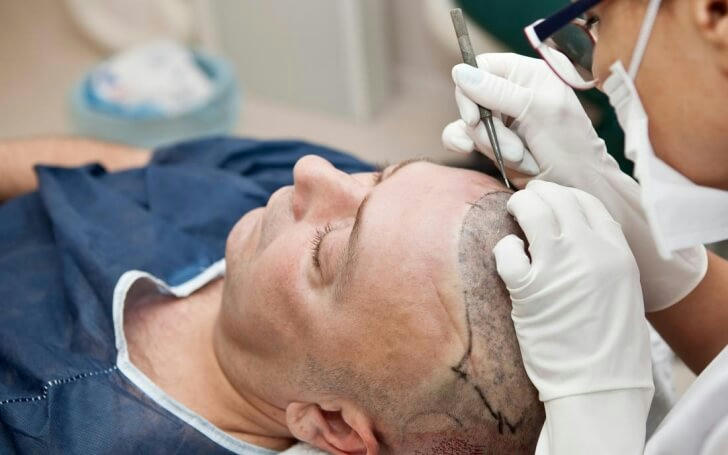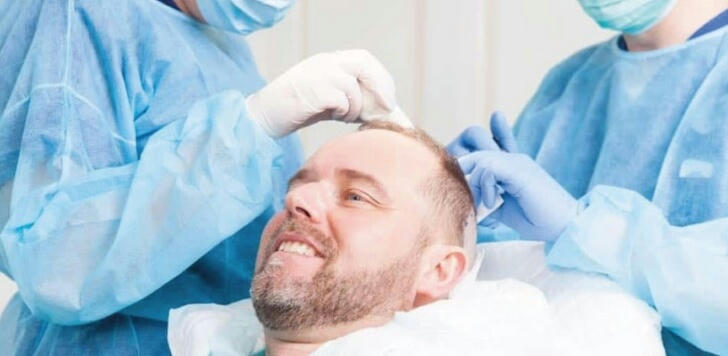How to Achieve a Fuller, Thicker Hair with Hair Transplantation
Hair loss is a growing concern that affects millions of people worldwide, especially those experiencing male or female pattern baldness. As we age, experience stress, or face genetic factors, thinning hair or bald spots become a natural part of the process. However, for many, it is a significant source of insecurity. Traditional treatments such as medications or hair growth products often fail to provide satisfactory results. Fortunately, hair transplantation offers a highly effective, permanent solution to restore hair and confidence. This article will explain the principles of hair transplantation, the different methods available, how to choose the right treatment for your needs, and share real-life cases to give you a deeper understanding of this life-changing procedure.

1. Basic Principles of Hair Transplantation
Hair transplantation is a surgical procedure that involves moving hair follicles from areas of the scalp that are genetically resistant to hair loss (typically the back and sides of the head) to areas that are thinning or balding. This technique restores hair growth in areas with little to no hair, providing a fuller, thicker appearance. The transplanted hair follicles continue to grow naturally in their new location, making hair transplantation a long-term solution for those struggling with hair loss.
Hair transplant techniques primarily focus on extracting and transplanting healthy, viable hair follicles from the donor area. This new hair will grow just as it did in its original location, providing a seamless, natural result. The most common methods used are FUE (Follicular Unit Extraction), FUT (Follicular Unit Transplantation), and DHI (Direct Hair Implantation). Each method has its own unique characteristics and is chosen based on individual needs.
2. Common Types of Hair Transplantation Methods
FUE (Follicular Unit Extraction) Method
The FUE technique involves extracting individual hair follicles directly from the donor area using a small, specialized punch tool. These follicular units are then meticulously transplanted into the thinning or balding areas. One of the key advantages of FUE is its minimally invasive nature: no large incisions are made, and no stitches are required, which leads to faster recovery times and less noticeable scarring.
Patients undergoing FUE hair transplant surgery experience minimal discomfort, and the procedure typically leaves only tiny dot-like scars, which are hardly visible to the naked eye. FUE is ideal for those who prefer to wear short haircuts and want to avoid large, linear scars. This method is also well-suited for people with smaller areas of hair loss or those who need fewer grafts.
FUT (Follicular Unit Transplantation) Method
FUT, also known as the "strip method," involves removing a strip of scalp from the donor area, usually the back of the head. This strip of skin is then divided into small follicular units, which are carefully transplanted into the balding areas. While this method allows for a higher number of grafts to be transplanted in one session, it does require making a long incision and suturing the donor area.
While the recovery time for FUT is longer, the technique tends to be more cost-effective and is preferred for patients who require a larger number of grafts. A potential downside of FUT is the linear scar it may leave in the donor area, but this can usually be hidden by the surrounding hair. FUT is best suited for patients who have significant hair loss and need a large number of follicles transplanted.
DHI (Direct Hair Implantation)
DHI is a more advanced and precise version of the FUE method. Instead of using a traditional needle to make incisions, DHI uses a specialized tool called the Choi Implanter Pen. This pen allows hair follicles to be directly implanted into the scalp without the need for incisions. DHI offers more precise control over the direction, depth, and angle of follicle placement, resulting in a more natural-looking hairline.
This technique eliminates the need for external incisions, reducing the risk of scarring. Additionally, DHI has a higher graft survival rate because the follicles are not exposed to the outside air for long periods, as they are directly implanted. DHI is ideal for those seeking the most natural and dense hairline, particularly for individuals with finer hair or those who require a high level of precision.
3. How to Choose the Right Hair Transplantation Method?
Choosing the best hair transplant method depends on several factors, including the extent of hair loss, the patient’s scalp condition, and personal preferences. Here are a few considerations that can guide you in selecting the right procedure:
Extent of Hair Loss: If you have extensive hair loss or require a large number of grafts, FUT may be the most appropriate option as it allows for the transplantation of a greater number of follicles in one session. On the other hand, FUE is a better choice for smaller areas of hair loss or for patients who prefer less invasive procedures.
Scalp Health: A healthy scalp is essential for successful hair transplant surgery. A consultation with a qualified specialist will help determine whether you are a good candidate for a hair transplant, taking into account factors such as scalp elasticity, donor hair quality, and overall skin condition.
Personal Preferences: If scarring is a concern for you, FUE and DHI are preferable as they leave minimal scarring. FUT, while more cost-effective for larger grafting procedures, may result in a visible linear scar. Additionally, the recovery times for FUT tend to be longer, so if you have a busy schedule or want a quicker recovery, FUE or DHI may be the better choice.
Budget: Generally, FUE and DHI are more expensive than FUT due to their advanced techniques and higher precision. FUT, while less expensive, requires more downtime. It’s essential to weigh the costs against your personal goals and budget.

4. Advantages and Considerations for Hair Transplantation
Advantages
Permanent Solution: One of the key advantages of hair transplantation is that it offers a permanent solution to hair loss. Once transplanted, the hair follicles continue to grow naturally, just as they did in the donor area. This means that, unlike temporary treatments such as hair loss medications, hair transplantation can provide a lifetime of results.
Natural-Looking Results: With advanced techniques like FUE and DHI, hair transplant procedures offer natural-looking results. The new hairline is customized to suit your face and appearance, ensuring a balanced, harmonious look. The transplanted hair grows in the natural direction, blending seamlessly with the existing hair.
Minimal Downtime: Hair transplant procedures are relatively non-invasive, particularly FUE and DHI, which means that patients typically experience minimal downtime. Most individuals can resume their normal activities within a few days. However, full recovery may take several months, during which time the hair gradually thickens and fills in.
Boosts Confidence: Beyond the physical transformation, hair transplantation has significant emotional and psychological benefits. Many patients report increased self-confidence and improved social interactions after their hair restoration procedure.
Considerations
Side Effects and Risks: Like any surgical procedure, hair transplants do come with risks and potential side effects, such as swelling, infection, bleeding, or scarring. However, complications are rare when the procedure is performed by an experienced surgeon. Following aftercare instructions carefully can minimize these risks.
Recovery Time: While the recovery period for FUE and DHI is shorter, FUT typically requires a longer healing time. It may take several weeks for the initial swelling and discomfort to subside, and the donor area needs time to heal. Patients are advised to avoid strenuous activities and exposure to the sun during the recovery phase.
Temporary Shedding: One common side effect of hair transplantation is shedding, where the transplanted hair falls out during the first few weeks after the procedure. This is a natural part of the process, and new hair will begin to grow in about three to four months. Full results can take up to a year to appear.
5. Real-Life Cases: Three Patient Experiences with Hair Transplantation
Case 1: David’s FUE Hair Transplant Journey (USA)
David, a 35-year-old man from New York, had been experiencing a receding hairline since his late twenties. Frustrated with his thinning hair and unwilling to wear a wig or use temporary solutions, he decided to opt for an FUE hair transplant.
After a consultation with a highly recommended hair transplant specialist, David underwent FUE surgery, during which 2,500 hair follicles were carefully transplanted. The procedure was completed in one day, and recovery was quick. Within six months, David saw substantial improvement in his hairline and density. He was ecstatic with the natural look of his hair and reported that his confidence soared, especially in his professional life. The minimal scarring and faster recovery time made David’s FUE procedure an excellent choice.
Case 2: Sophie’s FUT Experience (UK)
Sophie, a 42-year-old woman from London, had been dealing with hair thinning for many years, especially in the crown area. After trying numerous hair products with no success, she decided to go for an FUT hair transplant, as her hair loss was more severe.
Sophie underwent the FUT procedure, during which approximately 3,000 grafts were transplanted. Although the recovery time was a bit longer, Sophie was pleased with the results. Within months, her thinning crown was restored, and her hair density greatly improved. While Sophie had a small linear scar in the donor area, it was well-hidden by her hair, and she was more than satisfied with the final outcome.
Case 3: Michael’s DHI Procedure (Australia)
Michael, a 50-year-old man from Sydney, had been struggling with hair loss for years, particularly on the top of his scalp. Concerned with the precision required for his hairline and the naturalness of the result, he chose the DHI method for his transplant.
The procedure, though time-consuming, was highly effective. Michael was particularly impressed by the precision with which the hair follicles were placed. His hairline appeared natural, and the density was exactly what he had hoped for. A year after the procedure, Michael had a full, thick head of hair, and he couldn’t be happier with the results. He found the DHI method to be worth the investment, especially given its precision and the minimal recovery time.

6. Conclusion
Hair transplantation has become one of the most reliable, long-lasting solutions for those suffering from hair loss. Whether you choose FUE, FUT, or DHI, the results can significantly improve your appearance and restore your confidence. While choosing the right method depends on various factors, including the extent of hair loss, scalp condition, and personal preferences, it’s crucial to work with a qualified hair transplant specialist to ensure the best outcome.
Real-life cases demonstrate that hair transplant procedures are not only effective but also transformative, offering patients the opportunity to regain a full head of hair and boost their self-esteem. If you're considering a hair transplant, take the time to research your options and consult with a specialist who can guide you through the process and help you achieve the results you desire.
